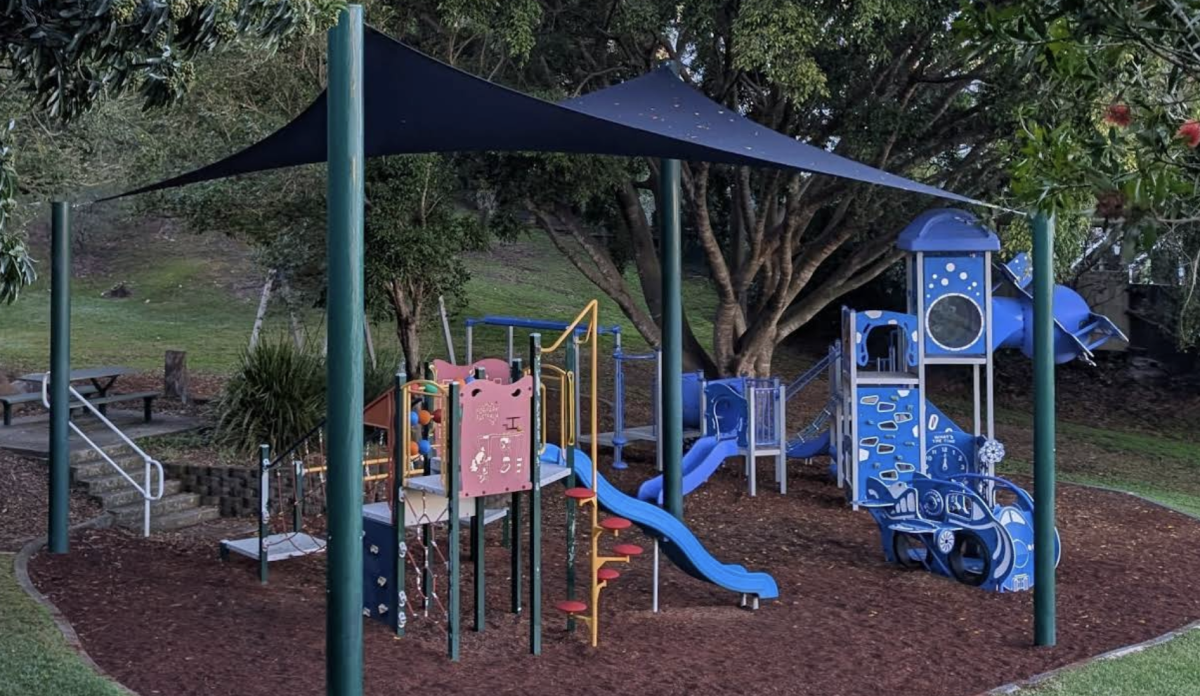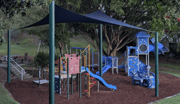
A routine trip to the park turned into a history lesson with a twist for one Brisbane dad, who couldn't help but notice something rather unfortunate about a popular Windsor playground.
His viral video has sparked conversations about one of Australia's most beloved aviation heroes—and whether we've accidentally created the world's most inappropriate memorial.
The discovery that launched a thousand comments
Zach Mander was just taking his children to play at Bert Hinkler Park in Windsor when he spotted the distinctive aircraft-shaped playground equipment hanging from the top tower. But it wasn't just any ordinary plane design—this one was positioned at a dramatic 45-degree downward angle, complete with flames painted across the wings.
What happened next was the kind of realisation that makes you question everything. A quick Google search revealed that Bert Hinkler, the park's namesake, was indeed a famous Australian aviator who died in a plane crash in 1933.
'It's like making a playground of the Titanic hitting an iceberg,' Mander observed in his now-viral social media post.
Who was Bert Hinkler? Australia's forgotten aviation hero
Before we delve into the playground predicament, it's worth understanding just who Bert Hinkler was—because his story is genuinely remarkable. Born Herbert John Louis Hinkler on 8 December 1892 in Bundaberg, Queensland, he was the son of a German-born stockman and developed his fascination with flight from an early age.
This determined young man taught himself aviation principles through correspondence courses and built two gliders in 1911-12, with his second design based on his own observations and photographs of ibises in flight. In 1912, at just 19 years old, he transported each piece of his homemade glider to Mon Repos Beach near Bundaberg by bicycle and launched his first flight, reaching 10 metres above the sand dunes.
Bert Hinkler's record-breaking achievements
- First solo flight from England to Australia (1928)- completed in just over 15 days, smashing the previous record of 28 days
- First solo flight across the South Atlantic (1931)
- Second person after Charles Lindbergh to fly solo across the Atlantic
- Awarded the Distinguished Service Medal in WWI for bravery and resourcefulness
- Made an honorary RAAF Squadron Leader and awarded the Air Force Cross
The flight that made him a national hero
On 7 February 1928, Hinkler took off from Croydon, England, in an Avro Avian aircraft, with only his wife and two passers-by as witnesses, determined to become the first person to fly solo from England to Australia. The 18,000-kilometre journey took just over 15 days, smashing the previous England-Australia record of 28 days.
When he touched down in Darwin on 22 February 1928, his arrival caused a media sensation, with over 10,000 people giving him a hero's welcome. Between Darwin and Sydney, his fame magnified and he was dubbed 'Hustling Hinkler', a nickname later immortalised in song. When he arrived in Sydney on 11 March 1928, an estimated 80,000 people gathered to welcome the hero, singing 'Hinkler, Hinkler little star, Sixteen days and here you are'.
The Australian government presented him with a cheque for £2,000, named him an honorary RAAF squadron leader, and he was awarded the Air Force Cross. He was even invited to sit on the floor of the House of Representatives in recognition of his achievement.
The tragic end of a brilliant career
On 7 January 1933, determined to regain his England-to-Australia record, Hinkler departed London Air Park in a fast de Havilland Puss Moth monoplane, aiming to complete the journey in less than eight days and 20 hours. Nothing more was heard from him until his body was discovered in the mountains close to Florence, Italy.
At the time of his death, informed people declared him Britain's leading aviator. He had been awarded the Segrave trophy, the Britannia challenge trophy, the gold medal of the Royal Aero Club, and the Johnston memorial air navigation trophy.
Australia's unique approach to memorial humour
The Bert Hinkler playground controversy taps into something distinctly Australian—our tendency toward what you might call 'memorial gallows humour.' The most famous example, as many commenters on Mander's video pointed out, is the Harold Holt Swim Centre in Victoria, named after the Prime Minister who disappeared while swimming in 1967 and is presumed to have drowned.
Did you know?
Australia isn't alone in this approach to naming conventions. Portugal's Francisco de Sá Carneiro Airport is named after a Prime Minister who died in a plane crash, while Oklahoma City has two airports named after people who died in the same 1980s plane crash: Will Rogers International Airport and Wiley Post Airport.
'This is just peak Australia,' confirmed one social media user, while another noted, 'Only Aussies wouldn't be offended.' There seems to be a cultural acceptance that death doesn't excuse someone from having 'the p*** taken,' as one laconic commenter put it.
Watch the full video here:
Source: @zachmander/Instagram
What makes the Brisbane playground particularly striking is how specifically it seems to recreate the circumstances of Hinkler's death. The aircraft isn't just positioned as a static memorial—it's angled downward with flames painted on the wings, essentially turning children's play time into a reenactment of an aviation disaster.
Interestingly, not all Hinkler memorials take this approach. Hinkler Park in Katoomba, New South Wales, also features aircraft-shaped playground equipment, but this one doesn't depict a crash scene—it's positioned as a normal, upright aircraft suitable for children's imaginative play.
The viral video has generated a fascinating range of responses from Australians. While some find the playground design tasteless, others see it as 'historically accurate' or applaud the council's apparent 'sense of humour'.
'Proud of our historically accurate playgrounds,' wrote one tongue-in-cheek commenter, while a parent suggested that children would 'love playing disaster scenarios with that thing' - perhaps missing the point about appropriate memorial design.
For families planning visits to memorial parks and historical sites, the Bert Hinkler playground raises some interesting questions about how we present history to children. While Australia's approach to memorial humour reflects our cultural character, it can create unexpected teaching moments.
The Bert Hinkler story also serves as a reminder of how many remarkable Australians have shaped our history, often without receiving the recognition they deserve in modern times. Hinkler's legacy rests in the air routes he helped pioneer that millions of people fly daily, yet many Australians today wouldn't recognise his name.
While the playground design might raise eyebrows, it's worth remembering that Bert Hinkler was genuinely one of Australia's greatest aviation pioneers. He was described as an 'exceptional mathematician and inventor' who 'made a lot of aviation instruments which were in use up until the Second World War'. During WWI, he invented a machine gun adaptor for air gunners that prevented hot, ejected shells from falling and burning the chests of gunners when biplanes flew upside down in combat.
Perhaps the real tragedy isn't the playground design, but that Hinkler's remarkable achievements—his innovations, his courage, his contribution to connecting Australia with the world—are less well-known than the way he died.
Whether you find the Brisbane playground inappropriate or amusing, it's certainly succeeded in getting people talking about Bert Hinkler again. And for a hero whose story deserves to be remembered, perhaps that's not entirely a bad thing.
What do you think—is the playground a harmless bit of Australian humour, or has Brisbane 'done Bert dirty' as the original video suggested? Have you visited any other memorial sites that made you do a double-take? Share your thoughts and experiences in the comments below.







